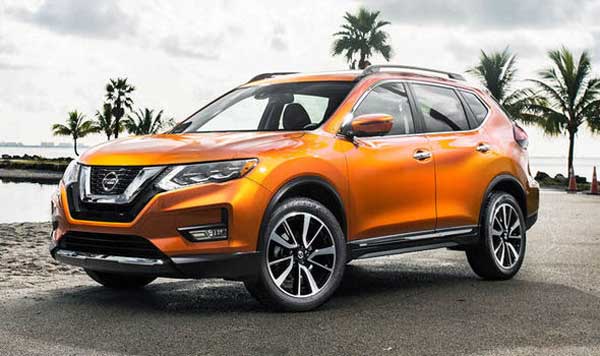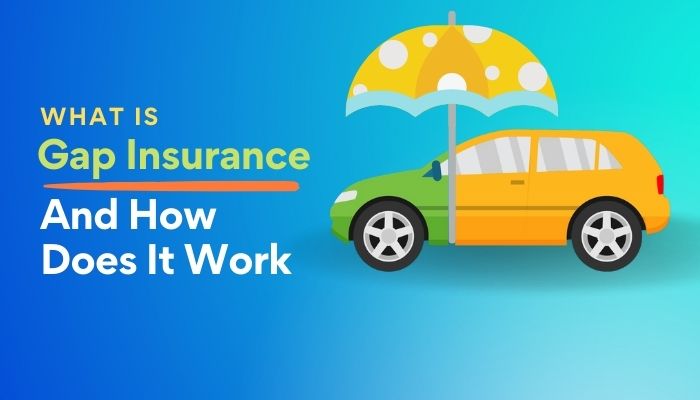Insurance on Leased Cars Complete Guide
Leasing a car gives you the freedom of having a vehicle without the challenges of owning one. You can drive a newer car that is under warranty during the time it is under your care, which means that you do not have to worry about anything more than routine maintenance. It is also an affordable way to get a car as the payments for a leased car are usually not as much as those you would pay when purchasing the same car.
Leasing a car is an ideal option if you like driving new cars as you will only use the car for the period of the lease after which you can lease another new vehicle. You will not have to worry about selling off the car as you will only need to return it to the dealer at the end of the lease. You will need to understand that leasing a vehicle comes with requirements that you must meet and adhere to during the leasing period. The insurance on leased cars is usually different as you will have to comply with the needs of the leasing company. Most leasing companies require an insurance option that offers more than primary insurance.
Furthermore, some lease terms can carry penalties if you exceed the miles in your contract. You may be required to pay the penalty if you inflict noticeable tear and wear on the car’s appearance and performance, which limits how you use the vehicle. Some dealers may charge you a fine if you choose to return the vehicle before the specified lease period expires. That said, car leasing remains an attractive option with the latest car statistics showing that more people are opting to lease as opposed to buying.
Leasing a car is a good option:
- You do not have a budget to buy the car
- If You will not likely exceed the mileage cap in the contract
- You want to drive a car beyond your purchase price range
- If You want to drive a newer car
- You are a careful driver not likely to dame the car
How Does Leasing Work?
Leasing a car works in the same way as a long term car rental. You will be required to make an upfront payment and monthly payments to use the vehicle for the specified lease period. Once the lease ends, you will return the car to the dealer. A lease is a binding contract between the person interested in borrowing the car and the company that owns the car. The monthly payment will be calculated based on the depreciation of the car at the end of the contract. Fees and interest will also contribute to your monthly payments.
Your lease agreement will cover:
- The amount you will pay to start your lease
- The length of a lease
- The current and the amount the car will be worth at the end of the contract
- The money factor or rent charge
- Fees applicable when the lease ends
- The amount you will pay to terminate the lease
- The miles you should drive in a year
- The definition of normal wear and tear as well as the excessive amount you will pay for excessive wear and tear
The Process of Leasing a Car
Step 1: Choose your ideal car
You will need to make your mind on the vehicle that you want. On most occasions, you will have several options that you can go to including SUVs and Sedans. You will also have to choose the right car model. You should ask the dealer for a list of models within your price range.
Step 2: Go for a test drive
On most occasions, you will have more than one option that could be of interest to you. You should take each car of interest for a test drive.
During the test drive, you should give more attention to:
- Visibility
- Braking
- Internal noise
- Steering
- Shock absorption
- Safety: Ask the salesperson about the following safety features
- Anti-lock brake systems (ABS)
- Side airbags
- ESC (Electronic stability control)
Step 3: Compare lease deals
Carefully go through the lease deals to find the option that offers higher value depending on the monthly amount you can afford and your car’s preference. Once you have made up your mind on the best option, you should negotiate the price. Your monthly payments will be calculated based on the final price you agree with the salesperson. As you negotiate the deal, you should beware of gap terms. Choosing to pay low monthly amounts will add to the total amount you will pay.
Step 4: Sign the lease
The last step is paying the agreed down payment and signing the lease papers. You should remember that choosing a high down payment will lead to low monthly payments.
Understanding the Car Leasing Cost Aspect
Determining the cost of the lease can be somewhat complicated due to the various terms used in the agreement. It helps to understand some of the terms before you can sit down to agree on the cost with the dealer. Some of the words you will come across during the negotiation include:
1. MSRP
The term refers to the market worth of a new car as determined by the manufacturer. You should seek to lower the MSRP down significantly.
2. Cap cost
The capitalized cost is the price that you agree with after negotiating the MSRP. It may also be termed as the lease price.
3. Residual value
The term refers to the amount the car will be worth when the lease contract ends. The past resale price data determine the figure. High resale value will make your lease cost affordable. It may help to lower the price by choosing a car with a high resale value.
4. Depreciation
The term refers to the difference between the cost of the new car and the amount the car will be worth when the lease agreement ends. The depreciation is what takes most of your monthly payments.
5. Lease rate
It is the interest rate. It’s may also be put forward as the money lease. The accounts for the second-biggest share of your monthly payments.
6. Mileage Allowance
Your lease agreement will feature the number of miles you should drive in a year. The standard mileage allowance is usually between 10,000 and 15,000. You should negotiate the figure to the highest possible mileage allowance. If you exceed the indicated number on the contract, you will be charged an additional fee that could be between $0.10 and $0.25 per mile. It is also an excellent idea to negotiate the figure to the lowest amount possible.
7. Lease term
The lease term is usually stated in months, and it is the length of the lease.
8. Purchase option agreement
If you would like to purchase the car when the lease ends, you should indicate your intentions at the beginning of the contract. The amount you will pay to buy the car should be written in the lease, and it is usually the residual value.
9. Upfront fees
The lease agreement will feature costs and charges that you will need to pay upfront. The expenses can include down payment, license fees, taxes, security deposit, and acquisition fee, among others. Make sure that you understand all charges included in your upfront fees.
10. Penalties and additional charges
Before signing the lease agreement, you should make sure that you understand the penalties that come with the lease. The common costs include late payment fees, disposal fees, early termination fees and tear and wear charges.
Insurance on Leased Cars
Before you can drive the car home, your car dealer will require you to purchase insurance for the vehicle. You will be required to meet the minimum auto insurance standard and any additional requirement the dealer may stipulate. The other conditions by the dealer like comprehensive and collision coverage make insurance on leased cars more expensive. Although the standard requirements vary from state to state, the primary insurance should offer coverage for bodily injury and property injury liability.
Facts About Insurance for Leased Cars
1. Coverage is mandatory
It does not matter that you do not own the car. You will not leave the leasing office without an insurance cover. You must meet the minimum state requirements as well as the minimum requirement by the dealer.
2. You may pay higher limits
Most dealership companies may require high liability insurance limits. The leasing firm may also require that you carry a lower deductible or put money in reserve if you choose a high deductible.
3. Additional features may be mandatory
In addition to the compulsory insurance coverage by the state, the leasing firm may require additional comprehensive and collision coverage. The collision cover pays for your car damages in case it rolls over or gets into a crash with another irrespective of who is at fault. The comprehensive option covers damages that are not accidents related to theft and vandalism.
4. You can save on original replacement parts
A major requirement by leasing firms is that you should only use original replacement parts, which are usually expensive. Luckily, you can take advantage of the low-cost insurance options that cover the cost difference between the generic and original replacement parts.
5. It is possible to save on leased car insurance
You can get discounts on insurance on leased cars if you bundle your car insurance with your homeowner’s insurance. Also, you qualify for a lower premium if you have a clean driving license or if your car comes equipped with safety features like a passenger restraint system and anti-theft device. You may also save on your leased car insurance if you go for the cheapest auto insurance companies in your state. If you are a new driver, you can save on your insurance costs by looking for an insurance provider offering car insurance for a new driver.
6. Gap insurance can benefit you
If your leased car gets totaled in an accident or stolen, gap insurance lease car cover can help you by covering the difference between what your insurance will cover and the car’s leased amount.
Lease Car Insurance Requirements
Since you do not own the car, the lesser may require you to carry more auto insurance than necessary as a protective measure. The higher coverage protects the leasing company and you as the lessee from shouldering the cost of repairs in case of an accident. Some of the lease car insurance requirements include:
- Collision insurance: It covers the damage caused by a collision with another car.
- Comprehensive insurance: It protects you from damages brought about by anything else other than a collision including fire, vandalism, theft and objects falling on the car among others.
- Original equipment manufacturer parts: The leasing company requires that you return the car in its original state, which means that all repairs should be made with the original equipment manufacturer. The OEM insurance covers the cost lowering the repair costs.
- More liability coverage: The bodily and property insurance coverage will be more than the standard requirement on some occasions by up to ten thousand dollars.
- Underinsured/ Uninsured: The option covers the damage in case the other party does not have adequate insurance.
- Include the leasing company as an insured party: The leasing company may require you to include it as an insured party. The company may also require you to stipulate it as a loss payee. In case of a claim, the insurance will pay you and the company based on which party is owed money.
Audi Lease Insurance Requirements
Audi cars are known for their safety features. They come with many optional and features like adjustable seat belts, daytime running lights, 4-wheel anti-lock brakes, traction control, and airbags. The features may help you get a lower premium, but your insurance requirements are usually higher than the minimum amount required. The actual minimum lease requirements will depend on the Audi center that leased you the car.
Nissan Lease Insurance Requirements
- Collision coverage with $1000 maximum deductible
- Comprehensive coverage with $1000 maximum deductible
- Property damage liability with a minimum of $50000 for every occurrence
- Bodily injury liability with a minimum of $100,000 and $300,000 per person and occurrence respectively
Gap Insurance for a Leased Car
The gap insurance is sometimes a mandatory requirement by most leasing companies. It covers the difference between the real value of the car and the amount owed. It is ideal for new cars that depreciate rapidly once driven off the dealership lot. The insurance is usually an add-on coverage option that is worth purchasing if you have a long lease. It is also necessary if you have selected a low down payment or if the financing has a high interest rate. Since new cars have a high depreciation rate, you will likely owe a sizeable amount on your lease payment in case of an accident, especially if you put a low down payment. However, it is worth noting that gap insurance is not always a good option. The option is not necessary if you have a large down payment.
Is Car Insurance Higher for Leased Cars?
The amount of insurance you pay has nothing to do with whether the car is leased or bought. You will pay the same amount for the same coverage. However, insurance on leased cars is usually high due to the additional requirements by dealerships. Other factors like your driving record, credit history and your past history leasing vehicles can also affect the cost of your insurance. If you are a new driver, you will likely pay more for your insurance as insurance providers will consider you a risky driver.
As a new driver, you can get affordable insurance for your leased car by looking for insurance companies with special discounts for new drivers. You may also get cheap options by taking a defensive driving course. The course makes you a safer driver by helping you avoid traffic crashes, which might make you qualify for affordable insurance. You may also qualify for affordable insurance if you bundle your insurance with other options like life insurance or increase your deductible.
How to Get Insurance for a Leased Car?
- Know the minimum insurance requirement set by the leasing company
- Make your decision on the additional coverage that you may need like gap insurance
- Shop around for the cheapest auto insurance companies offers
- Purchase the insurance
- Take it to the leasing company to finalize the lease contract
Bottom Line
If you need a car for a short time, leasing is the best option for you as you only pay to use the vehicle and not to own it. It also eliminates the problem of selling off the car when you no longer need it as you will only need to return it to the dealer at the end of the contract and walk away. You can also cancel the contract if need be although at a fee. However, you should be prepared to pay for higher insurance on leased cars. Most leasing firms require more liability coverage than the minimum requirement.







